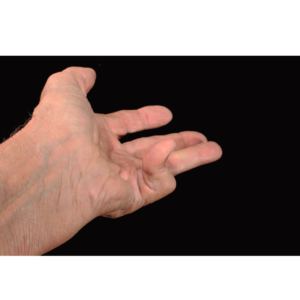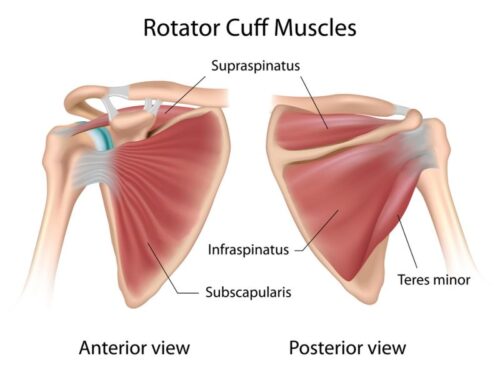Dupuytren’s contracture, also called Dupuytren’s disease, is a unique and complex condition that can wreak havoc on your hands, fingers, and even your feet or penis. While it may be commonly referred to as a “hand disease” or “Viking disease,” the truth is that it’s much more than that. It’s a progressive disorder that slowly but surely causes your fingers to curl inward, making everyday tasks like holding a cup of coffee or typing on a keyboard incredibly difficult. But don’t let its gradual onset fool you, because if left unchecked, Dupuytren’s disease can cause significant pain, discomfort, and disability. In this comprehensive guide, we’ll dive into the intricacies of this condition and explore everything from its root causes to the latest treatment options, all so that you can make informed decisions about your health and take back control of your life.
penis. While it may be commonly referred to as a “hand disease” or “Viking disease,” the truth is that it’s much more than that. It’s a progressive disorder that slowly but surely causes your fingers to curl inward, making everyday tasks like holding a cup of coffee or typing on a keyboard incredibly difficult. But don’t let its gradual onset fool you, because if left unchecked, Dupuytren’s disease can cause significant pain, discomfort, and disability. In this comprehensive guide, we’ll dive into the intricacies of this condition and explore everything from its root causes to the latest treatment options, all so that you can make informed decisions about your health and take back control of your life.
What is Dupuytren’s Contracture?
If you’ve ever felt a tightening or thickening of the tissue in your palms, then you may have experienced Dupuytren’s contracture. Known by some as palmar fibromatosis, this condition is a progressive disorder that causes thickened palmar fascia, the connective tissue in the palm of the hand, and can cause one or more fingers to curl inward towards the palm. The palmar fascia is the protective covering for nerves, blood vessels, muscles and tendons.
While it’s more common in middle-aged or elderly individuals, it can occur at any age and can be attributed to both genetic and environmental factors. In fact, the famous world leader Margaret Thatcher had a severe form of Dupuytren’s disease in her hands. Although it isn’t a life-threatening condition, Dupuytren’s contracture can cause significant pain, discomfort, and disability if left untreated. That’s why it’s important to understand the symptoms and causes of this condition and explore all treatments available.
Understanding the Causes and Risk Factors
Dupuytren disease is a complex condition that can be caused by a variety of factors. One of the primary causes is the buildup of collagen in the hand, which causes the connective tissue to thicken and tighten over time. This process can be triggered by a number of different risk factors, including age, gender, smoking, and diabetes, and can even be a genetic disorder. For example, men are more at risk of developing Dupuytren contracture than women, and those with a family history of the condition have a higher risk as well. Those with certain medical conditions have an increased risk of getting Dupuytren disease such as those with diabetes or seizure disorders. People of Northern European descent are also more likely to experience this condition. Additionally, lifestyle factors such as heavy manual labor or frequent hand injuries can increase the likelihood of developing it. By understanding these risk factors, you can work with your healthcare provider to monitor any changes in your hands and take steps to prevent or treat Dupuytren’s contracture.
Signs and Symptoms of Dupuytren’s Contracture
 When the disease begins usually someone develops a painful bump just below the ring finger on their palm. Here are some common symptoms that may develop in the disease progression:
When the disease begins usually someone develops a painful bump just below the ring finger on their palm. Here are some common symptoms that may develop in the disease progression:
- Formation of nodules or lumps in the palm of the hand
- Thickened cords or bands of tissue underneath the skin that may extend from the palm to the fingers
- Difficulty straightening one or more fingers, particularly the ring and little finger
- Pain or discomfort when attempting to move the affected finger(s)
- Limited range of motion in the hand or fingers, making it difficult to perform everyday tasks such as holding objects or gripping them firmly
- Skin dimpling or puckering over the affected area
- PIP contractures – when the proximal interphalangeal joint becomes locked in a fixed position
It’s important to note that not all individuals with Dupuytren disease will experience the same symptoms or have the same severity of the condition. Some people may only have mild symptoms that progress slowly over time, while others may experience more severe pain and loss of function. Those that have Dupuytren disease are also more likely to have Peyronie disease and plantar fibromatosis, also called Ledderhose disease. If you notice any of these symptoms, it’s important to speak with your healthcare provider to get an accurate diagnosis and start exploring treatment options. [Another reason your hand could hurt]
What Are the Types of Dupuytren’s Contracture?
Dupuytren’s disease is a condition that can affect different areas of the hand and fingers, resulting in various types of contractures. Here are some different types:
- Palmar contracture: This is the most common type of Dupuytren’s contracture, which causes the palm to become thickened and contracted. Over time, this can lead to the fingers bending inward towards the palm.
- Nodular contracture: This type of contracture is characterized by the development of small nodules or lumps in the palm of the hand. These painful nodules may eventually form into cords that can cause finger contracture.
- Digital flexion contracture: This type of contracture affects the fingers themselves, causing them to become bent and twisted into unnatural positions. The middle and ring fingers are most commonly affected.
- Knuckle pads: In some cases, Dupuytren’s contracture can also cause the formation of thickened, callus-like patches on the knuckles.
The different types of Dupuytren contractures can vary in their severity and progression, but they all share a common symptom – the fingers become fixed in a bent position, making it difficult to complete everyday tasks. It’s important to work with a healthcare provider to accurately diagnose the type and severity of your contracture and explore treatment options that may help alleviate symptoms and improve hand function.
Treatment Options for Dupuytren’s Contracture
When it comes to treating Dupuytren’s contracture, there are a variety of options available depending on the severity of the condition. Here are some different treatments:
- Nonsurgical treatment: This may include physical therapy, occupational therapy, or hand therapy exercises to improve mobility and reduce pain. However, these treatments are most effective in the early stages of the condition.
- Injectable medications: Certain medications such as a collagenase injection, an enzyme injection, can be used to break down the thickened tissue, alleviate symptoms and help with finger mobility. Steroid injections may also be used to relieve pain and help reduce inflammation.
- Percutaneous needle aponeurotomy (PNA): a minimally invasive surgical technique that has proven effective in treating Dupuytren contracture. This technique involves using a small needle to puncture the affected cords of tissue, which are then manipulated to break them up and release the tension that causes the finger contracture. The procedure is performed on an outpatient basis under local anesthesia, and it typically takes less than 30 minutes to complete. One of the advantages of needle aponeurotomy is that it is a minimally invasive procedure, which means there is less scarring, shorter recovery times, and a lower risk of complications compared to more invasive surgical procedures. Additionally, PNA has been shown to have a lower recurrence of forming cords rate than other minimally invasive techniques such as percutaneous needle fasciotomy.
- Percutaneous needle fasciotomy (PNF) is a more invasive surgical procedure that involves making an incision in the palm to release the contracted tissue. There are two types of fasciotomy: limited fasciectomy, which involves removing only the affected tissue in the palm, and complete fasciectomy, which involves removing all of the affected tissue, including the cords, in the palm and fingers.
- Radiation therapy: The use of radiation therapy for Dupuytren’s contracture involves delivering low-dose radiation to the affected area over the course of several weeks. This is believed to help reduce the activity of the fibroblasts that cause the thickening of the connective tissue, thereby slowing or halting the progression of the condition. Due to the limited evidence supporting the effectiveness of this type of therapy for Dupuytren’s contracture and the potential risks involved, it is not considered a first-line treatment option. Instead, most healthcare providers will explore other non-surgical or surgical options before considering it.
It’s important to consult with your healthcare provider to determine the most appropriate treatment plan for your specific condition. Treatment is often tailored to individual needs and goals, and may involve a combination of different approaches to achieve optimal results. While there is no cure for Dupuytren contracture, many people are able to find relief and regain the function of their finger joints with proper treatment.
Surgery for Dupuytren’s Contracture: Risks and Benefits
There are several surgical procedures available for Dupuytren’s contracture, depending on the severity and location of the affected tissues. Here are some common surgical procedures:
- Fasciotomy: This is a minimally invasive procedure that involves making small incisions in the palm to release the contracted tissue. It is typically used for early-stage Dupuytren’s contracture with limited involvement of the fingers.
- Limited fasciectomy: This procedure involves removing only the affected tissue in the palm, leaving the cords intact. It is often used for moderate to severe Dupuytren contracture that is still in the early stages.
- Complete fasciectomy: This procedure involves removing all of the affected tissue under the skin, including the thick cords, in the palm and fingers. It is typically used for more advanced cases of Dupuytren’s contracture that have caused significant functional impairment.
- Dermofasciectomy: This procedure involves removing both the affected tissue and overlying skin in the palm and fingers. A skin graft is then used to replace the removed skin to improve hand function and appearance.
Surgical procedures for Dupuytren’s cords are typically performed under local anesthesia on an outpatient basis. The specific procedure recommended may depend on the severity of the condition, the location of the affected tissues, and the goals of the patient. A patient will likely need reconstructive surgery by a plastic surgeon.
Like any medical procedure, there are both potential risks and benefits to consider. Here are some common risks and benefits of surgical treatment for Dupuytren’s disease:
Benefits:
- Improved hand function: Surgery can help release the contracted tissue and improve range of motion in the affected fingers.
- Reduced pain and discomfort: Surgery can alleviate the pain and discomfort associated with Dupuytren’s contracture.
- Improved appearance: Surgical procedures such as dermofasciectomy can also improve the appearance of the hand and fingers.
Risks:
- Infection: There is a risk of infection following any surgical procedure, which can require additional treatment and delay recovery.
- Nerve damage: Surgery can sometimes damage nerves in the hand, resulting in numbness or loss of sensation.
- Stiffness and scar tissue: Following surgery, there is a risk of developing stiffness and scar tissue in the hand, which can impact hand function.
- Disease Recurrence: In some cases, Dupuytren’s disease may recur after surgery, requiring additional treatment.
It’s important to discuss the potential risks and benefits of surgery with your healthcare provider to determine if surgery is the right option for you. While there are risks associated with any medical procedure, surgical treatment for Dupuytren disease can be an effective way to improve hand function and quality of life for individuals with this condition.
Is Massage Good for Dupuytren’s Contracture
 Massage therapy can be a beneficial complementary treatment option for individuals with Dupuytren contracture. Massage can help improve circulation and flexibility in the affected hand, which can reduce stiffness and pain associated with the condition. Massage can also help release tension in the hand and fingers, which can help improve hand function and range of motion.
Massage therapy can be a beneficial complementary treatment option for individuals with Dupuytren contracture. Massage can help improve circulation and flexibility in the affected hand, which can reduce stiffness and pain associated with the condition. Massage can also help release tension in the hand and fingers, which can help improve hand function and range of motion.
In addition to improving physical function, massage therapy can also be a helpful tool for managing stress and anxiety associated with the condition. Living with a chronic condition like Dupuytren’s can be challenging, and massage therapy can provide a relaxing and therapeutic experience that can help individuals cope with the emotional impact of the condition.
While massage therapy is not a substitute for medical treatment for Dupuytren’s contracture, it can be a useful complement to other treatment options such as surgery or physical therapy. If you are considering massage therapy for your Dupuytren contracture, it’s important to work with a licensed massage therapist who has experience working with individuals with this condition.
Conclusion
Dupuytren contracture is a condition that affects the hand and fingers, causing the tissue to thicken and contract over time. Symptoms of Dupuytren’s contracture include a loss of flexibility in the affected fingers, pain, and discomfort. While there is no cure for Dupuytren’s contracture, there are several treatment options available, including surgery, physical therapy, and massage therapy.
Massage therapy can be a beneficial complement to other treatments for Dupuytren contracture. If you are living with this painful problem and are interested in incorporating massage therapy into your treatment plan, consider calling Body Ache Escape Massage Center to schedule a massage. Our licensed massage therapists have experience working with individuals with this condition and can provide a therapeutic and relaxing experience tailored to your needs. Don’t let Dupuytren’s contracture limit your quality of life – call us today to learn more about how massage therapy can help you manage your symptoms. 614-604-6358







